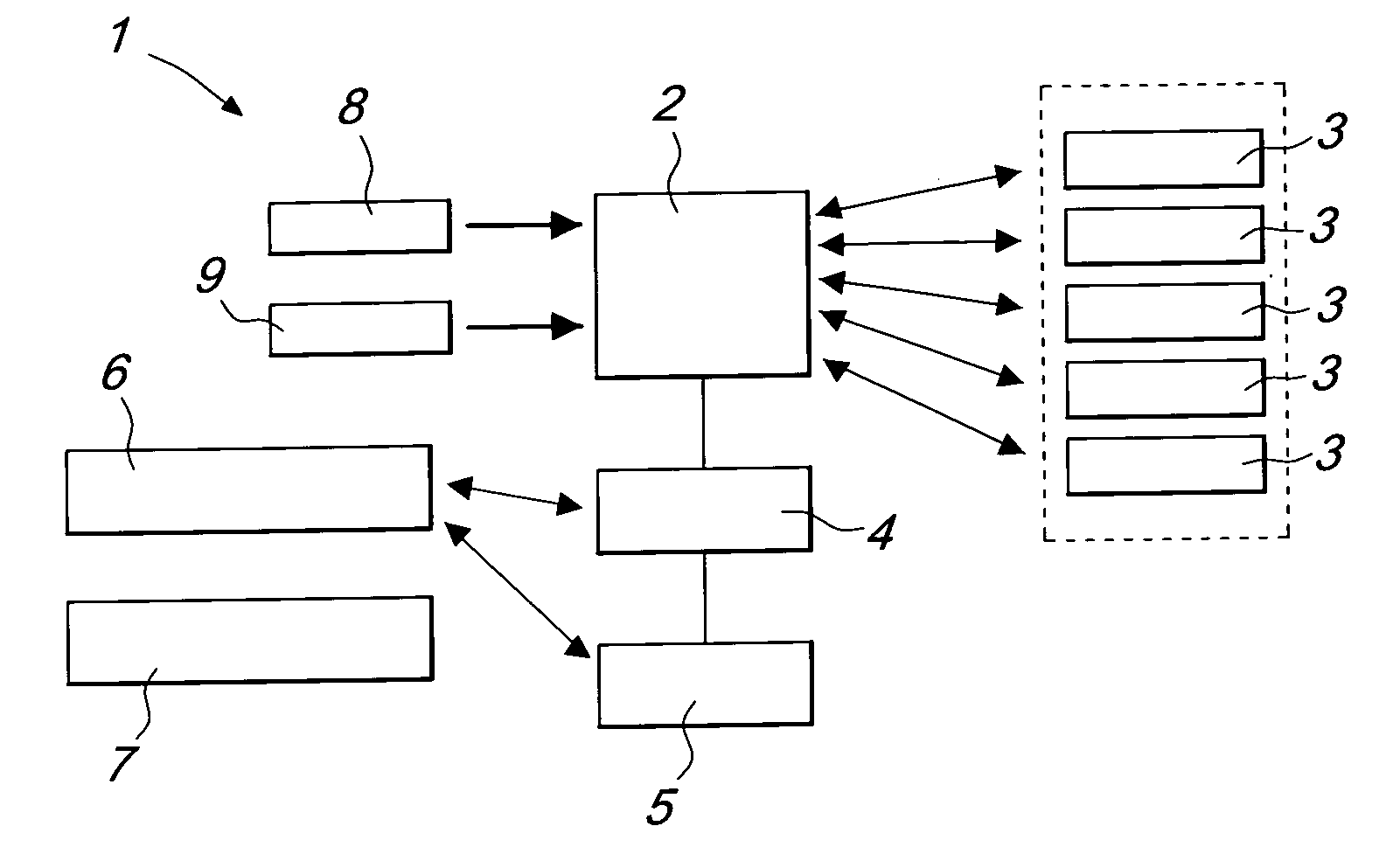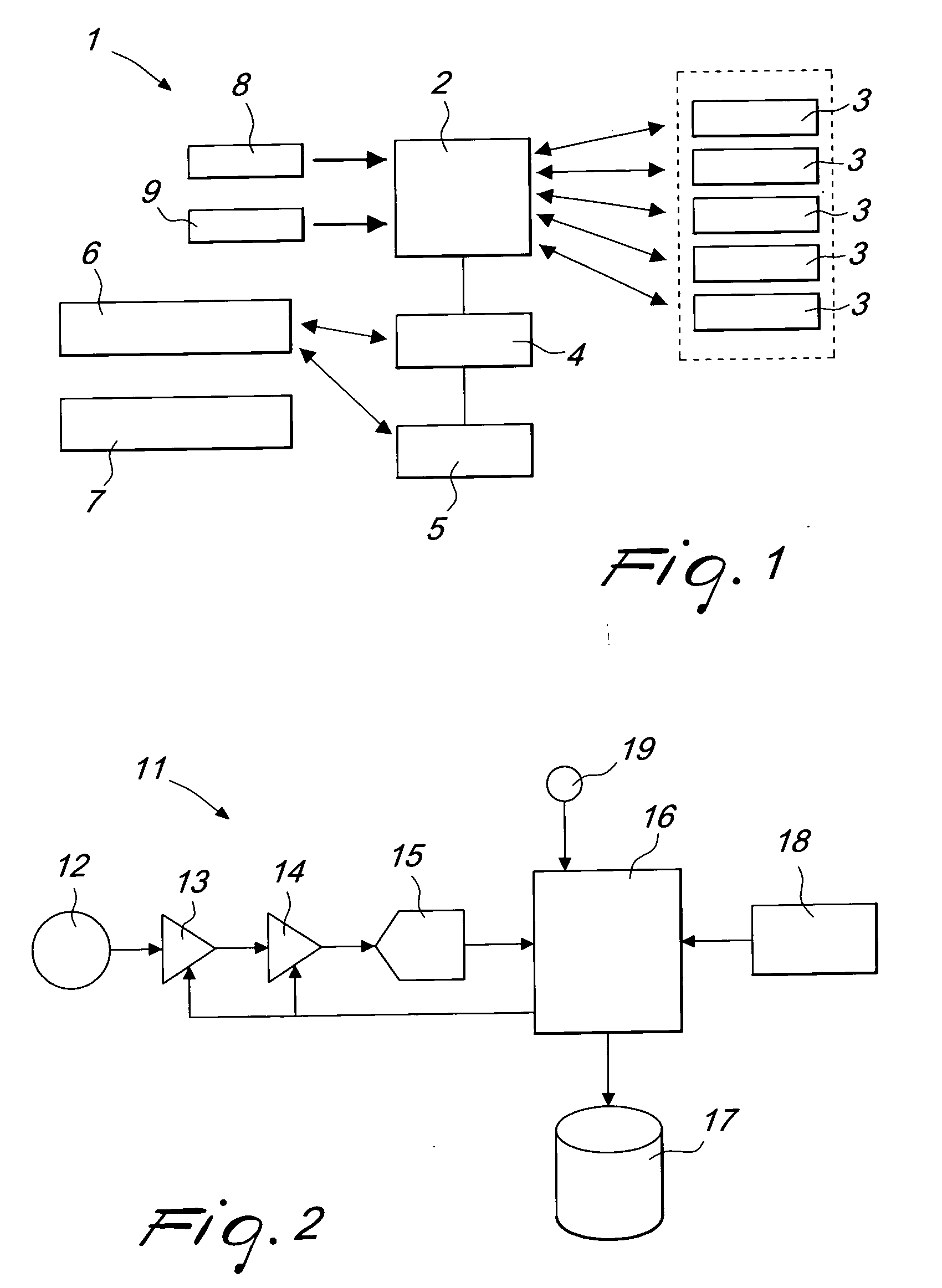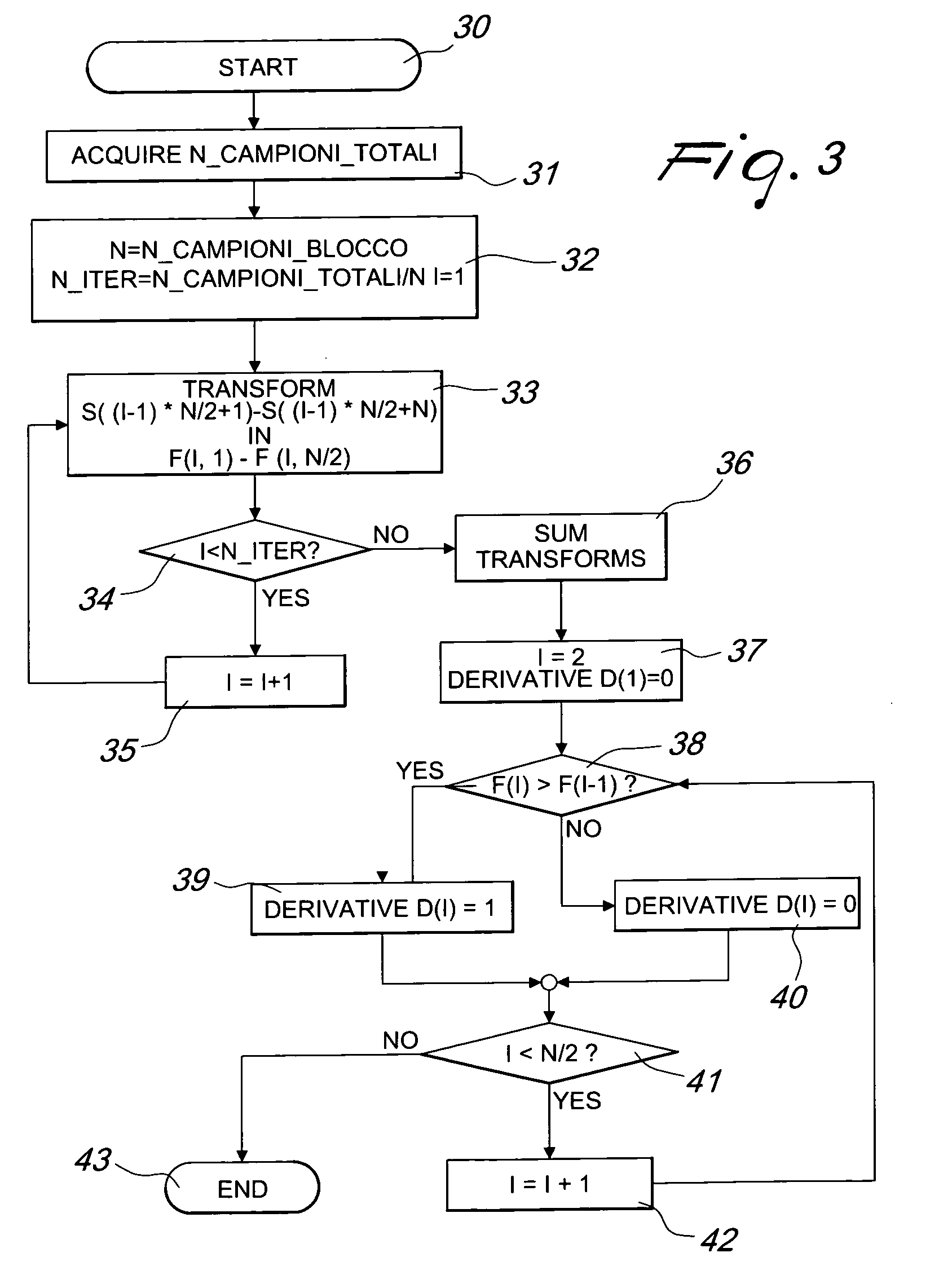Method and system for comparing audio signals and identifying an audio source
a technology of audio signals and audio sources, applied in the field of methods and systems for comparing audio signals and identifying audio sources, can solve the problems of large number of radio and television stations that broadcast their signals, extremely disparate schedules of each broadcaster, and large number of radio and television stations
- Summary
- Abstract
- Description
- Claims
- Application Information
AI Technical Summary
Benefits of technology
Problems solved by technology
Method used
Image
Examples
Embodiment Construction
[0027] An exemplifying architecture of data processing of the system according to the present invention is summarized in the block diagram of FIG. 1.
[0028] The data 8, 9 in input to the system 1, i.e., files 8 from radio and television sources which have been appropriately encoded, for example in the WAV format, and data 9 from meters 11, described in detail hereinafter, are stored by a storage system 2, which is shared by a set of clusters 3 and by the system controller or master 4.
[0029] The state of the processing, the location of the results and the configuration of the system are stored in a relational database 5.
[0030] The system 1 is completed by two further components, which are referenced here as “remote monitor system”6 and “remote control system”7. The former is responsible for checking the functionality and operativity of the various parts of the system and for reporting errors and anomalies, while the latter is responsible for controlling and configuring the system. ...
PUM
 Login to View More
Login to View More Abstract
Description
Claims
Application Information
 Login to View More
Login to View More - R&D
- Intellectual Property
- Life Sciences
- Materials
- Tech Scout
- Unparalleled Data Quality
- Higher Quality Content
- 60% Fewer Hallucinations
Browse by: Latest US Patents, China's latest patents, Technical Efficacy Thesaurus, Application Domain, Technology Topic, Popular Technical Reports.
© 2025 PatSnap. All rights reserved.Legal|Privacy policy|Modern Slavery Act Transparency Statement|Sitemap|About US| Contact US: help@patsnap.com



